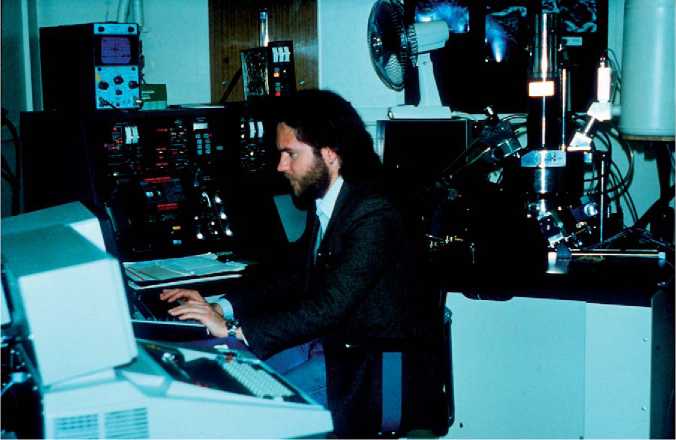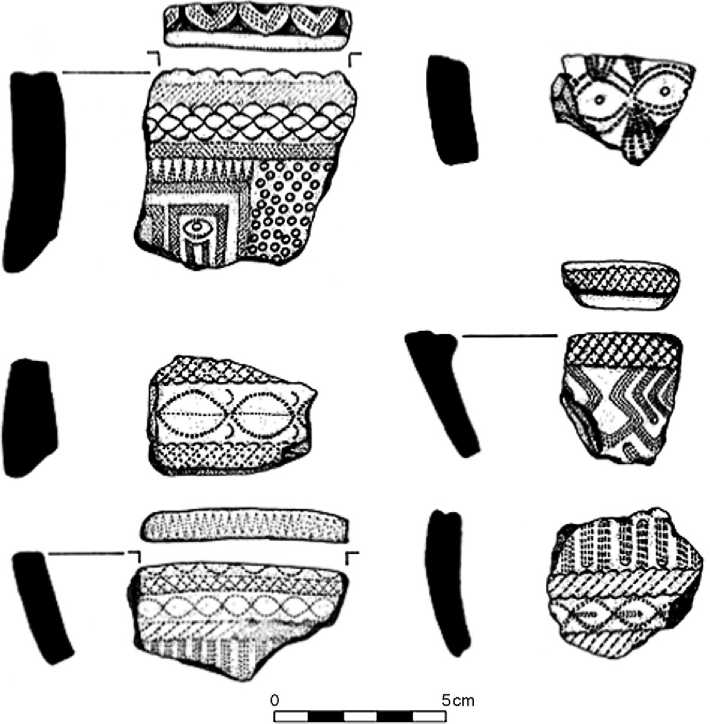Ancient regional exchange systems are often associated with rare and exotic valuable materials known to have restricted distributions, such as lapis lazuli, ostrich egg shell (Africa), amber, spondylus shell, jade, obsidian, copper, and other precious material items. Yet most past exchange would have involved materials or goods used for daily existence, such as food. These, however, would be rarely seen in the archaeological record, being perishable. Thus, the archaeology of exchange deals mostly in those resilient artifacts hardy enough to be left in the archaeological record, such as obsidian, stone, pottery, or jade, for instance. These techniques became successful because of the premise that exchange must be demonstrated, rather than assumed.
Pottery is difficult to characterize or fingerprint. Often archaeologists use what is called a ‘criterion of relative abundance’ which infers that most pottery from a production center is to be found locally. Yet if pottery was produced for exchange only, then little would be found locally thus limiting the application of this concept. The ‘criterion of relative abundance’ is useful, however, when used with a physicochemical analysis for provenance studies. That is, relate the pottery under study back to its raw materials: nonplastic inclusions (minerals, sands, etc.) and clay. Mineral inclusions found within pottery can be related to local geology, and both river and beach sands. Clays, on the other hand, vary greatly with respect to the underlying geology, and a study of the elemental composition of pottery may give a clue to their origin. The chemical analysis of clay is complex and dependant on the parent material, climatic changes, geomorphology, and weathering.
The importance in undertaking a physicochemical analysis of pottery can be seen with the example of

Lapita pottery presented below. In the past, archaeologists often viewed stylistic similarities over large distances as a consequence of exchange. Stylistic similarities in pottery, for instance, have been equated with regional exchange systems where trade or exchange of pots from one or a restricted number of centers took place. Yet, in many instances, this is not the case. The pottery tradition of Lapita, for instance, is spread from Papua New Guinea to Tonga, a distance of over 4000 km. It is stylistically homogeneous having a suite of shared decorated motifs made by a dentate stamping technique. Over 30 years ago, it was thought that this pottery was made in one or a handful of manufacturing centers and then exchanged with other communities, thus accounting for its spread within Melanesia. Yet, after extensive petrographic and chemical analyses, it was established that with the exception of a couple of assemblages, most Lapita pottery was locally made (see Figure 2). It was people and ideas that were exchanged, not the pots. Thus, if local production of an object is demonstrated, then models other than the trade/exchange of the object must be developed to account for stylistic similarity.
Identifying the source of an object and studying the context of production is not easy. The use of a ‘resource zone concept of source’ is useful here in defining a geographical region from which the object was produced. For instance, the exact spot where the firing of a pot took place or obsidian was extracted is not crucial here; only whether the pottery is of local origin or not, or if the obsidian originated from a defined area. Attributing an object to a general regional zone (or procurement zone) is often more important than trying to identify a precise spot for manufacture. In any provenance study of archaeological objects, a few words of caution from Garman Harbottle, a nuclear physicist, are best heeded:

Archaeologists love the term sourcing, with its upbeat, positive thrust - that you analyze or examine an artifact and, by comparison with the material of known origin, ‘source’ it. In point of fact, with very few exceptions, you cannot unequivocally source anything. What you can do is characterize the object, or better, groups of similar objects found in a site or archaeological zone by miner-alogical, thermoluminescent, density, hardness, chemical and other tests, and also characterize the equivalent source materials, if they are available, and look for the similarities to generate attributions. A careful job of chemical characterization, plus a little numerical taxonomy and some auxiliary archaeological and/or stylistic information, will often do something as useful: it will produce groupings of artifacts that make archaeological sense. This, rather than absolute proof of origin, will often necessarily be the goal.
Other materials with restricted natural sources are prone to be exchanged, if not because of their utility, then because of their value. Obsidian is a good example as it is chemically homogeneous, anD its sources, which have restricted natural distributions, can be chemically fingerprinted. Earlier work by Colin Renfrew had demonstrated its importance in modeling exchange patterns. Yet, its application requires extensive research. Identifying the potential source areas of a material requires an intensive search within a known region. For instance, in a recent study on obsidian exchange within the western Pacific over a 20 000 year time-span, archaeologists have concentrated on the source areas within West New Britain, Papua New Guinea. Over a number of years, obsidian flows were mapped by both Jim Specht and Robin Torrence of the Australian Museum and samples taken for characterization using PIXE-PIGME with the result that a finer discrimination of sources was possible with five source localities chemically defined (see Figure 3).
By analyzing obsidian found in archaeological sites (some artifacts more than 3700 km distant from their source) it was possible to not only trace it to its source localities, but also to define changes in the selection of different sources over time. Obsidian from source localities in New Britain, Papua New Guinea were distributed over 6500 km from Fiji in the east and Borneo in the west, 3000 years ago (Figure 4).




 World History
World History









